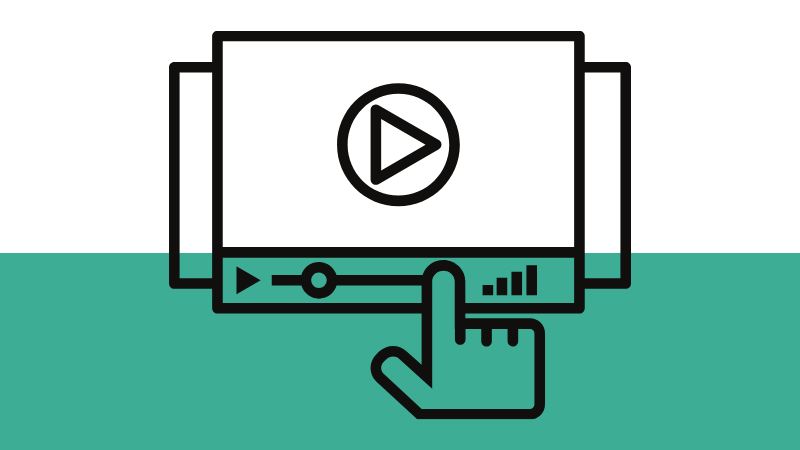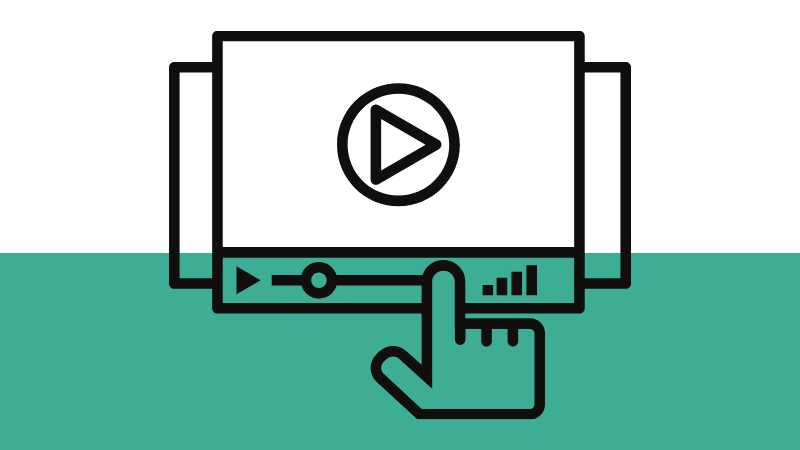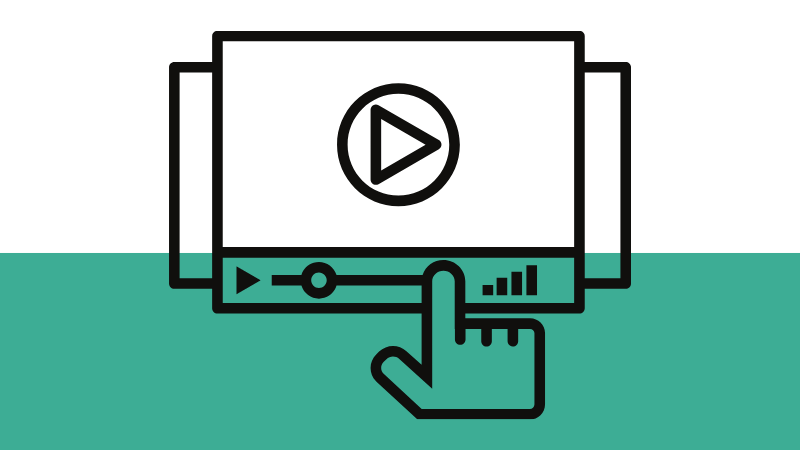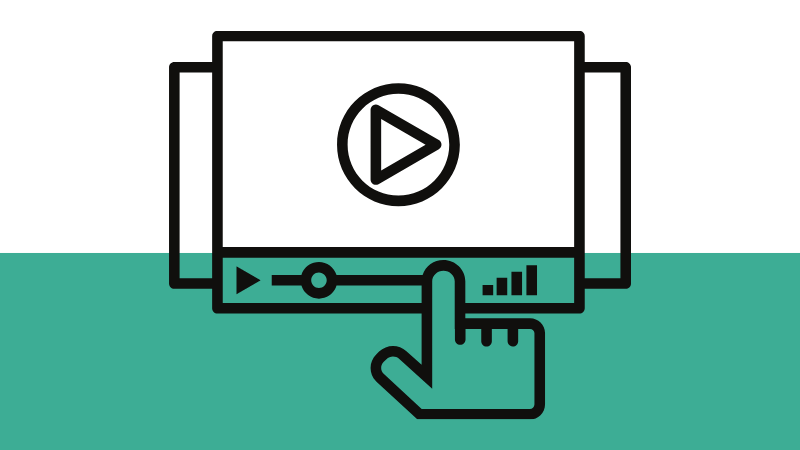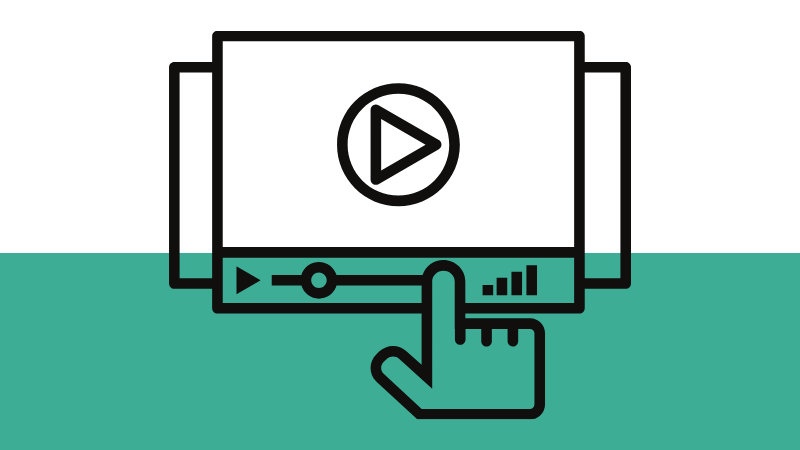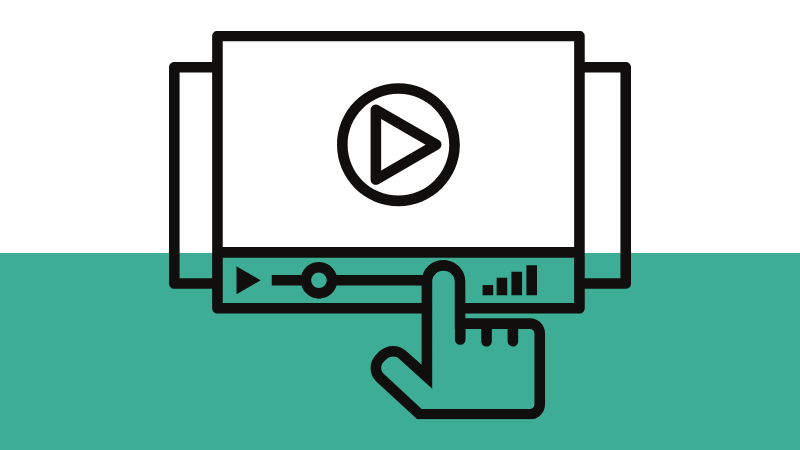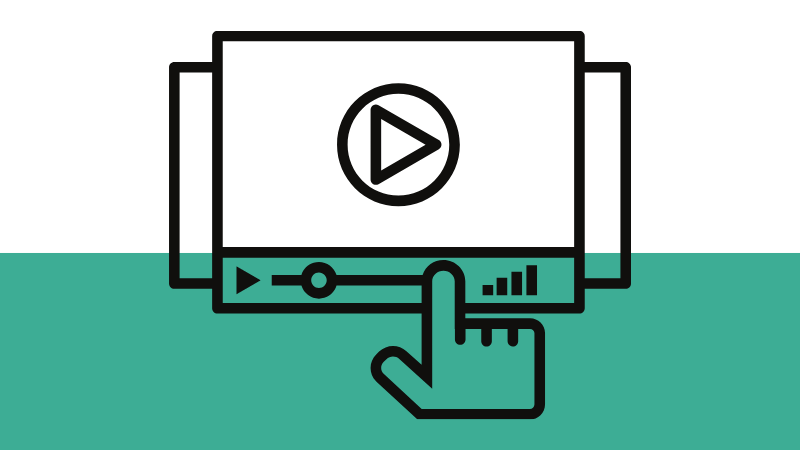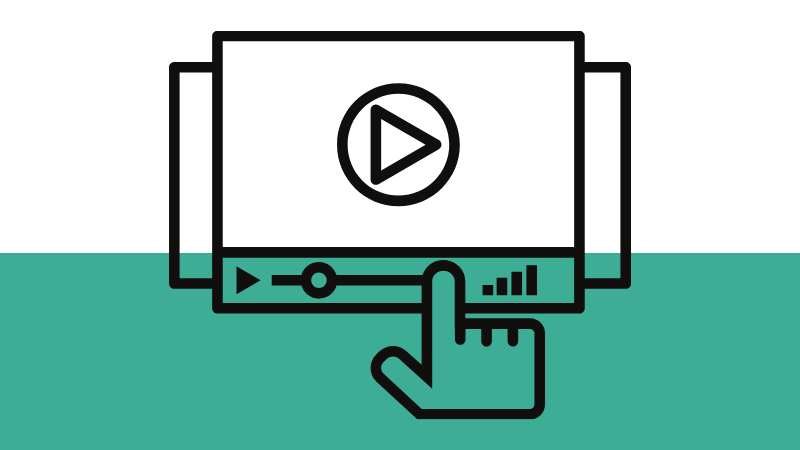
Pump and System Fundamentals | On-Demand Training Bundle Curriculum
-
Register
- Non-member - $857
- Member - $643
- Associate Member - $643
- Academic Partner - $814
- PSAP Industry Partner - $814
- Pump Industry Partner - $814
- Pump Industry Partner Retiree - $814
- Standards Partner - Consultant - $643
- Standards Partner - End User - $643
- Standards Partner - End User & Basic Training - $643
- Training Partner - $643

Training Program Overview:
This training bundle is designed to provide participants fundamental knowledge on all aspects of the system, pump, and components. From calculating system head to factors that affect reliability, pump selection and everything in between, attendees will leave with knowledge they need to perform their job more effectively. The bundle is laid out in a logical progression of topics starting with system hydraulics and power consumption and then transitioning to the pumps, their operation, impact on reliability and proper pump selection. It then transitions to the important components in or used with pumps such as bearings, couplings, motors and variable frequency drives. Any technical employees in the fluid handling industry will benefit from this training.
Who Should Attend:
This training is designed to educate and train pump engineers, technical sales, pump system owners, designers, and operators throughout the fluid handling and pumping industry.
Course Materials Included:
- Slide Deck
- On-Demand Recording
- Quiz Questions
Continuing Education Credit(s):
Upon the successful completion of this On-Demand Training bundle you will receive a Certificate of Completion. 13 PDHs | 1.3 CEUs | 13 CONTACT HOURs
* Note 1.0 PDHs is equivalent to 0.10 CEUs or 1.0 Contact Hours
Sections:
*Click links below for additional information.
- System Hydraulics: Pump & System Curves, Control Methods & Energy Consumption
- Pump Power and Efficiency
- Rotodynamic Pumps
- Net Positive Suction Head (NPSHA) and Total Head Calculations
- Pump Reliability and Performance Based on Operating Point and Design Conditions
- Pump Selection
- Induction Motors
- Variable Frequency Drives
- Variable Speed Pump
- Mechanical Seals
- Rolling Element Bearings
- Flexible Couplings
Additional Educational Resources:
*Click links below for additional information.
- Pump System Fundamentals Course
- Pump System Optimization and Assessment Course
- Pump System Assessment Professional (PSAP) Prep Course
- Motor and VFD Principals Course
- Pump System Optimization for Commercial Buildings Course
Registration Fees
Individual registration fees for a 1-part On- Demand Training are shown below per member type. The applicable registration fee will display once you login to your account. The bundle pricing for the Fundamentals On-Demand Curriculum can be found below.
| HI Member Type | 12 - Part Bundle On- Demand Training |
| Member | $643 |
| Associate Member | $643 |
| Standards Partner | $643 |
| Training Partner | $643 |
| Industry Partner | $814 |
| Academic Partner | $814 |
| Non-Member/Non-Partner | $857 |
Members, Associate Members, Standards Partners, and Training Partners of the Hydraulic Institute (HI) receive 25% discount on all available PSM training. Employees of Members, Associate Members, Standards Partner, and Training Partner organizations must log-in with their company email address in order for the discounted registration fee to apply. Industry Partners and Academic Partners receive 5% discount on all PSM training. Click here to learn more about HI membership.
Membership Question? Call us at 973-267-9700, email us, or view the HI website for more information.
Group Registration
Group registration discounts are available. If you are interested in registering a group, please contact us at training@pumps.org.
Refunds & Cancellations
All refund requests must be made in writing to training@pumps.org.
-
Contains 11 Component(s), Includes Credits
Attendees of this training provides fundamentals on variable speed pumping and the drives used to vary the speed of the pump. In addition, attendees will get a refresher on the pump and system curves, how they affect the operating point and methods of controlling the system pressure or flowrate.

Training Program Overview:
Attendees of this training provides fundamentals on variable speed pumping and the drives used to vary the speed of the pump. In addition, attendees will get a refresher on the pump and system curves, how they affect the operating point and methods of controlling the system pressure or flowrate. Lastly, attendees will walk away with an understanding of specific energy consumption and how variable speed pump effects the pump life cycle cost. Learn the components of the system curve, how to calculate the system curve, the pump curve and how to use it with the system curve to determine the operating point(s). How to control or change the operating point will be covered including methods to change the pump and system curve as well as multiple pump operation.
Modules:
Module 1: Pump System Requirements
Module 2: Pump Curves & Varying the Operating Point
Module 3: Variable Speed Drivers
Module 4: Cost of Variable Speed Pumping
Who Should Attend:
This training is designed to educate and train pump engineers, technical sales, pump system owners, designers, and operators throughout the fluid handling and pumping industry.
Course Materials Included:
- Slide Deck
- On-Demand Recording
- Quiz Questions
Continuing Education Credit(s):
Upon the successful completion of this On-Demand Training section you will receive a Certificate of Completion. 1 PDHs | 0.1 CEUs | 1 CONTACT HOURs
* Note 1.0 PDHs is equivalent to 0.10 CEUs or 1.0 Contact Hours
Additional Educational Resources:
*Click links below for additional information.
- Pump System Fundamentals Course
- Pump System Optimization and Assessment Course
- Pump System Assessment Professional (PSAP) Prep Course
- Motor and VFD Principals Course
- Pump System Optimization for Commercial Buildings Course
Outline:
Module 1: System requirements
- Pump system objective
- Pump system energy balance
- System curve
- System control
- Key Learning Outcomes
- Quiz
Module 2: Pump curves and varying the operating point
- Pump curve overview
- Rotodynamic and positive displacement pumps
- Operating point Varying the operating point
- Pump input power
- Key Learning Outcomes
- Quiz
Module 3: Variable speed drivers
- Engine
- Turbine
- Eddy current
- Fluid drive
- Variable frequency driveTorque and speed method
- Key Learning Outcomes
- Quiz
Module 4: Cost of variable speed pumping
- Pump life cycle cost
- Specific energy consumption
- Estimating energy consumption
- Energy cost examples based on the load profile and system curve
- Key Learning Outcomes
- Quiz
-
Contains 11 Component(s), Includes Credits
Attendees of this training will learn the components of the system curve, how to calculate the system curve, the pump curve and how to use it with the system curve to determine the operating point(s). How to control or change the operating point will be covered including methods to change the pump and system curve as well as multiple pump operation.

Training Program Overview:
Attendees of this training will learn the components of the system curve, how to calculate the system curve, the pump curve and how to use it with the system curve to determine the operating point(s). How to control or change the operating point will be covered including methods to change the pump and system curve as well as multiple pump operation.
Modules:
Module 1: Define Pump and Systems and Identify Types of Pump Curves
Module 2: System Curve Equations
Module 3: Pump System Energy Consumption
Module 4: Pump and System Curve Interaction (Operating Point) and Methods of Varying the Operating Point
Who Should Attend:
This training is designed to educate and train pump engineers, technical sales, pump system owners, designers, and operators throughout the fluid handling and pumping industry.
Course Materials Included:
- Slide Deck
- On-Demand Recording
- Quiz Questions
Continuing Education Credit(s):
Upon the successful completion of this On-Demand Training section you will receive a Certificate of Completion. 1 PDHs | 0.1 CEUs | 1 CONTACT HOURs
* Note 1.0 PDHs is equivalent to 0.10 CEUs or 1.0 Contact Hours
Additional Fundamentals On-Demand Training Available:
*Click links below for additional information.
- System Hydraulics: Pump & System Curves, Control Methods & Energy Consumption
- Pump Power and Efficiency
- Rotodynamic Pumps
- Positive Displacement Pumps
- Net Positive Suction Head (NPSHA) and Total Head Calculations
- Pump Reliability and Performance Based on Operating Point and Design Conditions
- Pump Selection
- Induction Motors
- Variable Frequency Drives
- Variable Speed Pump
- Mechanical Seals
- Rolling Element Bearings
- Flexible Couplings
Additional Educational Resources:
*Click links below for additional information.
- Pump System Fundamentals Course
- Pump System Optimization and Assessment Course
- Pump System Assessment Professional (PSAP) Prep Course
- Motor and VFD Principals Course
- Pump System Optimization for Commercial Buildings Course
Outline:
Module 1: Define Pump and Systems and Identify Types of Pump Curves
- Pump Curve Selection Chart
- Published Pump Curves
- Submittal Pump Curve
- Certified Performance Curve
- Key Learning Outcomes
- Quiz
Module 2: System Curve Equations
- Pipe Flow
- System Equation: View from the Pump
- Simplified System Curve
- System Curve – Static & Friction
- Measuring the System Curve: SCADA
- Key Learning Outcomes
- Quiz
Module 3: Pump System Energy Consumption
- Life Cycle Cost of Typical Pumping System
- What Impacts Energy Consumption?
- Pump Power Consumption Summary
- What is Energy Consumption?
- Pump Energy Calculation Example
- Key Learning Outcomes
- Quiz
Module 4: Pump and System Curve Interaction (Operating Point) and Methods of Varying the Operating Point
- On/Off
- Variable Speed Control
- Impeller Trim
- Throttling
- Bypass
- Parallel & Series
- Application Control Example
- Key Learning Outcomes
- Quiz
-
Contains 13 Component(s), Includes Credits
This training covers the determination of the efficiency and the power required by the system, pump or bowl assembly, driver, and controls.

Training Program Overview:This training covers the determination of the efficiency and the power required by the system, pump or bowl assembly, driver, and controls. Measurement and calculation methods will be covered including electrical, torque and speed, and the use of the pump curve.
Modules:
Module 1: Define Pump Efficiency
Module 2: Pump System Power (Pump Output, Pump Input and Electrical Input)
Module 3: Measuring Input Power
Module 4: Determining Pump Efficiency
Module 5: Pump Curves and Affinity Rules
Who Should Attend:
This training is designed to educate and train pump engineers, technical sales, pump system owners, designers, and operators throughout the fluid handling and pumping industry.
Course Materials Included:
- Slide Deck
- On-Demand Recording
- Quiz Questions
Continuing Education Credit(s):
Upon the successful completion of this On-Demand Training section you will receive a Certificate of Completion. 1 PDHs | 0.1 CEUs | 1 CONTACT HOURs
* Note 1.0 PDHs is equivalent to 0.10 CEUs or 1.0 Contact Hours
Additional Fundamentals On-Demand Training Available:
*Click links below for additional information.
- System Hydraulics: Pump & System Curves, Control Methods & Energy Consumption
- Pump Power and Efficiency
- Rotodynamic Pumps
- Positive Displacement Pumps
- Net Positive Suction Head (NPSHA) and Total Head Calculations
- Pump Reliability and Performance Based on Operating Point and Design Conditions
- Pump Selection
- Induction Motors
- Variable Frequency Drives
- Variable Speed Pump
- Mechanical Seals
- Rolling Element Bearings
- Flexible Couplings
Additional Educational Resources:
*Click links below for additional information.
- Pump System Fundamentals Course
- Pump System Optimization and Assessment Course
- Pump System Assessment Professional (PSAP) Prep Course
- Motor and VFD Principals Course
- Pump System Optimization for Commercial Buildings Course
Outline:
Module 1: Defining Pump Efficiency
- Pump Curve
- Power Consumption
- Pump & Drive Train Efficiency
- Key Learning Outcomes
- Quiz
Module 2: Pump System Power
- Pump Output Power
- Pump Input Power
- Electrical Input Power
- Key Learning Outcomes
- Quiz
Module 3: Measuring Input Power
- Uncertainties in Determining Pump Input Power Based on Methods
- Pump Input Power
- Torque and Speed Method
- Electrical Input Power
- Key Learning Outcomes
- Quiz
Module 4: Determining Pump Efficiency
- Pump Efficiency
- Volumetric Efficiency in Positive Displacement Pumps
- Pump Efficiency Calculation
- Overall Efficiency Calculation
- Bowl Efficiency
- Key Learning Outcomes
- Quiz
Module 5: Pump Curves and Affinity Rules
- Pump Efficiency
- Manufacturers Pump Curve and Impeller Trim Representations
- Pump Curve Exercise
- Affinity Rules Based on Speed Change
- Affinity Rule Exercise
- Key Learning Outcomes
- Quiz
-
Contains 11 Component(s), Includes Credits
Attendees will learn how to identify centrifugal, mixed and axial flow pumps, the important hydraulic components such as the casing and impeller types, and the typical construction.

Training Program Overview:Attendees will learn how to identify centrifugal, mixed and axial flow pumps, the important hydraulic components such as the casing and impeller types, and the typical construction. Additionally, you'll walk away with knowledge of how these pumps operate, their general performance characteristics, the many classifications and the major market segments that use these pumps.
Modules:
Module 1: Review and Define Rotodynamic Pumps and Their Classifications
Module 2: Overview of Rotodynamic Pump Impellers and Casings
Module 3: Overview of Rotodynamic Pump Types and Nomenclatures
Module 4: Rotodynamic Market Segments and Application Use(s)
Who Should Attend:
This training is designed to educate and train pump engineers, technical sales, pump system owners, designers, and operators throughout the fluid handling and pumping industry.
Course Materials Included:
- Slide Deck
- On-Demand Recording
- Quiz Questions
Continuing Education Credit(s):
Upon the successful completion of this On-Demand Training section you will receive a Certificate of Completion. 1 PDHs | 0.1 CEUs | 1 CONTACT HOURs
* Note 1.0 PDHs is equivalent to 0.10 CEUs or 1.0 Contact Hours
Additional Fundamentals On-Demand Training Available:
*Click links below for additional information.
- System Hydraulics: Pump & System Curves, Control Methods & Energy Consumption
- Pump Power and Efficiency
- Rotodynamic Pumps
- Positive Displacement Pumps
- Net Positive Suction Head (NPSHA) and Total Head Calculations
- Pump Reliability and Performance Based on Operating Point and Design Conditions
- Pump Selection
- Induction Motors
- Variable Frequency Drives
- Variable Speed Pump
- Mechanical Seals
- Rolling Element Bearings
- Flexible Couplings
Additional Educational Resources:
*Click links below for additional information.
- Pump System Fundamentals Course
- Pump System Optimization and Assessment Course
- Pump System Assessment Professional (PSAP) Prep Course
- Motor and VFD Principals Course
- Pump System Optimization for Commercial Buildings Course
Outline:
Module 1: Review and Definition of Rotodynamic Pumps and Their Classifications
- Relevant Rotodynamic HI Standards
- Define a Rotodynamic Pump
- Types of Rotodynamic Pumps
- Specific Speed: How to Calculate and How it Correlates to Rotodynamic Impeller Type
- Key Learning Outcomes
- Quiz
Module 2: Overview of Rotodynamic Pump Impellers and Casings
- Types of Rotodynamic Pump Impellers
- Common and Unique Features of Rotodynamic Pump Impeller
- Types of Rotodynamic Pump Casings
- Common and Unique Features of Rotodynamic Pump Casings
- Key Learning Outcomes
- Quiz
Module 3: Rotodynamic Pump Types and Nomenclature
- Life Cycle Cost of Typical Pumping System
- Rotodynamic Pump Classifications
- HI Nomenclature and Sub-classifications
- Overhung Impeller Types (OH): Configuration and Coupling Method
- Circulator Type (CP): Coupling Method and Dry or Wet Rotor
- Between-Bearing Type (BB): Number of Stages and Casing Type/Design
- Vertically Suspended Type (VS): Casing Type/Design and Mechanical Configuration
- Regenerative Turbine Type (RT)
- Key Learning Outcomes
- Quiz
Module 4: Rotodynamic Market Segments and Application Use(s)
- Market Segments: Markets for which Rotodynamic Pumps are Utilized
- Applications within each Market Segment that Require Rotodynamic Pumps
- Key Learning Outcomes
- Quiz
-
Contains 11 Component(s), Includes Credits
The proper selection of positive displacement (PD) and rotodynamic (RD) pumps involves many considerations and relies on established industry guidance, standards and experience.

Training Program Overview:The proper selection of positive displacement (PD) and rotodynamic (RD) pumps involves many considerations and relies on established industry guidance, standards and experience. This training covers primary application considerations in the selection of PD and RD pumps, industry standards, and presents a 13-step selection methodology. Finally, hydraulic considerations will be reinforced with an efficient selection example.
Modules:
Module 1: Overview of Rotodynamic and Positive Displacement Pump Types and Application Considerations
Module 2: Standards, Regulations and Labeling
Module 3: Pump selection methodology (13 steps)
Module 4: Efficient selection example (Consider the operating point)
Who Should Attend:
This training is designed to educate and train pump engineers, technical sales, pump system owners, designers, and operators throughout the fluid handling and pumping industry.
Course Materials Included:
- Slide Deck
- On-Demand Recording
- Quiz Questions
Continuing Education Credit(s):
Upon the successful completion of this On-Demand Training section you will receive a Certificate of Completion. 1 PDHs | 0.1 CEUs | 1 CONTACT HOURs
* Note 1.0 PDHs is equivalent to 0.10 CEUs or 1.0 Contact Hours
Additional Fundamentals On-Demand Training Available:
*Click links below for additional information.
- System Hydraulics: Pump & System Curves, Control Methods & Energy Consumption
- Pump Power and Efficiency
- Rotodynamic Pumps
- Positive Displacement Pumps
- Net Positive Suction Head (NPSHA) and Total Head Calculations
- Pump Reliability and Performance Based on Operating Point and Design Conditions
- Pump Selection
- Induction Motors
- Variable Frequency Drives
- Variable Speed Pump
- Mechanical Seals
- Rolling Element Bearings
- Flexible Couplings
Additional Educational Resources:
*Click links below for additional information.
- Pump System Fundamentals Course
- Pump System Optimization and Assessment Course
- Pump System Assessment Professional (PSAP) Prep Course
- Motor and VFD Principals Course
- Pump System Optimization for Commercial Buildings Course
Outline:
Module 1: Overview of Rotodynamic and Positive Displacement Pump Types and Application Considerationss
- Pump and System Curve
- Typical Range Charts
- Published Pump Curves
- Rotodynamic Pump and Application Considerations
- Positive Displacement Pump and Application Considerations
- Key Learning Outcomes
- Quiz
Module 2: Standards, Regulations and Labeling
- Rotodynamic Pump Standards and Guidelines
- Positive Displacement Standards and Guidelines
- DOE Regulations for Pumps
- HI Energy Rating Label
- Key Learning Outcomes
- Quiz
Module 3: Pump selection methodology (13 steps)
- Application Types
- Design Criteria
- Pump and System Curve Interaction
- Pump Types and Configurations
- Calculating Pump Rotational Speed
- Selection based off Specific Speed
- Key Learning Outcomes
- Quiz
Module 4: Efficient selection example (Consider the operating point)
- System design impacts the pump’s operating efficiency.
- System design and flow/head requirements should be used to select the correct pump.
- Efficient pumps can operate inefficiently.
- Key Learning Outcomes
- Quiz
-
Contains 13 Component(s), Includes Credits
Attendees of this training will learn the components of the system curve, how to calculate the system curve, the pump curve and how to use it with the system curve to determine the operating point(s).

Training Program Overview:This training provides detailed instruction and examples of how pump Total Head, Bowl Assembly Head, and Net Positive Suction Head (NPSH) are defined and calculated. Additionally, cavitation and the need for NPSH margin is covered. Attendees will learn from multiple presented examples for calculations of available NPSH and Total Head.
Modules:
Module 1: Pressure and Head, and Pressure Profile Through the Pump
Module 2: Pump Total Head
Module 3: Pump Total Head Calculations
Module 4: Net Positive Suction Head
Module 5: Net Positive Suction Head Calculations
Who Should Attend:
This training is designed to educate and train pump engineers, technical sales, pump system owners, designers, and operators throughout the fluid handling and pumping industry.
Course Materials Included:
- Slide Deck
- On-Demand Recording
- Quiz Questions
Continuing Education Credit(s):
Upon the successful completion of this On-Demand Training section you will receive a Certificate of Completion. 1 PDHs | 0.1 CEUs | 1 CONTACT HOURs
* Note 1.0 PDHs is equivalent to 0.10 CEUs or 1.0 Contact Hours
Additional Educational Resources:
*Click links below for additional information.
- Pump System Fundamentals Course
- Pump System Optimization and Assessment Course
- Pump System Assessment Professional (PSAP) Prep Course
- Motor and VFD Principals Course
- Pump System Optimization for Commercial Buildings Course
Outline:
Module 1: Pressure, Head and Pump pressure profile
- Pressure definitions & types
- Converting pressure to head
- Pressure profile through the pump
- Key Learning Outcomes
- Quiz
Module 2: Pump Total Heads
- Pump Total Head Defined
- Calculation Considerations and Units
- Gauge Head, Elevation Head, Velocity Head
- Key Learning Outcomes
- Quiz
Module 3: Pump Total Head Calculations
- Flooded Suction Wet Pit & Bowl Head
- Closed piping end suction
- Submersible pump
- Key Learning Outcomes
- Quiz
Module 4: Net Positive Suction Head
- Pressure profile and cavitation
- Net Positive Suction Head Available
- Net Positive Suction Head Required and Margin Considerations
- Key Learning Outcomes
- Quiz
Module 5: Net Positive Suction Head Available Calculation
- Flooded Suction Wet Pit
- Closed piping, no suction pressure
- Closed piping, with suction pressure
- Key Learning Outcomes
- Quiz
-
Contains 9 Component(s), Includes Credits
This training defines the Preferred Operating Region (POR) and the many design and application considerations used to determine the Allowable Operating Region (AOR).

Training Program Overview:This training defines the Preferred Operating Region (POR) and the many design and application considerations used to determine the Allowable Operating Region (AOR). The effects on pump reliability are a focus of the training as well as strategies to maintain operation in the POR.
Modules:
Module 1: Best Efficiency Point (BEP), Preferred Operating Region (POR) and Allowable Operating Region (AOR)
Module 2: Factors considered in determining the Allowable Operating Region
Module 3: Methods to maintain operation in the AOR
Who Should Attend:
This training is designed to educate and train pump engineers, technical sales, pump system owners, designers, and operators throughout the fluid handling and pumping industry.
Course Materials Included:
- Slide Deck
- On-Demand Recording
- Quiz Questions
Continuing Education Credit(s):
Upon the successful completion of this On-Demand Training section you will receive a Certificate of Completion. 1 PDHs | 0.1 CEUs | 1 CONTACT HOURs
* Note 1.0 PDHs is equivalent to 0.10 CEUs or 1.0 Contact Hours
Additional Educational Resources:
*Click links below for additional information.
- Pump System Fundamentals Course
- Pump System Optimization and Assessment Course
- Pump System Assessment Professional (PSAP) Prep Course
- Motor and VFD Principals Course
- Pump System Optimization for Commercial Buildings Course
Outline:
Module 1: Best Efficiency Point (BEP), Preferred Operating Region (POR) and Allowable Operating Region (AOR)
- Best Efficiency Point
- Preferred Operating Region
- Specific Speed
- Allowable Operating Region
- Pump Curve Examples
- Key Learning Outcomes
- Quiz
Module 2: Best Efficiency Point (BEP), Preferred Operating Region (POR) and Allowable Operating Region (AOR)
- Hydraulic loads, thrust, deflection and suction recirculation.
- Mechanical design, size, deflection, bearing loads, mechanical contact and vibration limits.
- Pump curve shape, instabilities and power draw.
- Application considerations, liquid temperature rise, NPSH Margin and clogging
- Key Learning Outcomes
- Quiz
Module 3: Methods to maintain operation in the AOR
- Variable speed operation
- Consideration for low and static head
- Parallel pumping
- Minimum flow bypass
- Key Learning Outcomes
- Quiz
-
Contains 11 Component(s), Includes Credits
This training provides the fundamental knowledge needed to use and apply induction motors successfully.

Training Program Overview:This training provides the fundamental knowledge needed to use and apply induction motors successfully. Attendees will learn the relevant standards, classifications, electrical requirements, rating definitions, sizing and selection considerations, application considerations related to the speed, torque and starting, important motor considerations when used with VFDs, and the applicable environment for enclosure types.
Modules:
Module 1: Electrical Requirements & General Function
Module 2: Motor Loading, Starting & VFD Considerations
Module 3: Frame Designation & Mounting
Module 4: Enclosures
Who Should Attend:
This training is designed to educate and train pump engineers, technical sales, pump system owners, designers, and operators throughout the fluid handling and pumping industry.
Course Materials Included:
- Slide Deck
- On-Demand Recording
- Quiz Questions
Continuing Education Credit(s):
Upon the successful completion of this On-Demand Training section you will receive a Certificate of Completion. 1 PDHs | 0.1 CEUs | 1 CONTACT HOURs
* Note 1.0 PDHs is equivalent to 0.10 CEUs or 1.0 Contact Hours
Additional Educational Resources:
*Click links below for additional information.
- Pump System Fundamentals Course
- Pump System Optimization and Assessment Course
- Pump System Assessment Professional (PSAP) Prep Course
- Motor and VFD Principals Course
- Pump System Optimization for Commercial Buildings Course
Outline:
Module 1: Electrical Requirements & General Function
- Standard
- Voltage & Phase
- Poles and Speed
- Nameplate
- Key Learning Outcomes
- Quiz
Module 2: Motor Loading, Starting & VFD Considerations
- Terminology related to sizing.
- Load types vs. speed torque curve
- Starting methods
- VFD Considerations
- Key Learning Outcomes
- Quiz
Module 3: Frame Designation & Mounting
- Nameplate
- NEMA & IEC
- NEMA Mounting Configurations
- Key Learning Outcomes
- Quiz
Module 4: Enclosures
- Nameplate
- NEMA Types
- Ingress Classifications
- Hazardous locations
- Key Learning Outcomes
- Quiz
-
Contains 11 Component(s), Includes Credits
This training provides the fundamentals needed to use and apply variable frequency drives.

Training Program Overview:This training provides the fundamentals needed to use and apply variable frequency drives. Attendees will learn about the basic design and function, how they control pump operation, selection and application considerations, and basic troubleshooting considerations.
Modules:
Module 1: Definitions, How VFD Works and Advantages
Module 2: System Control
Module3: VFD requirements & Considerations
Module 4: Troubleshooting
Who Should Attend:
This training is designed to educate and train pump engineers, technical sales, pump system owners, designers, and operators throughout the fluid handling and pumping industry.
Course Materials Included:
- Slide Deck
- On-Demand Recording
- Quiz Questions
Continuing Education Credit(s):
Upon the successful completion of this On-Demand Training section you will receive a Certificate of Completion. 1 PDHs | 0.1 CEUs | 1 CONTACT HOURs
* Note 1.0 PDHs is equivalent to 0.10 CEUs or 1.0 Contact Hours
Additional Educational Resources:
*Click links below for additional information.
- Pump System Fundamentals Course
- Pump System Optimization and Assessment Course
- Pump System Assessment Professional (PSAP) Prep Course
- Motor and VFD Principals Course
- Pump System Optimization for Commercial Buildings Course
Outline:
Module 1: Definitions, How VFD Works and Advantages
- AC Motor
- Starters
- Variable Frequency Drive
- How they work
- Advantages
- Key Learning Outcomes
- Quiz
Module 2: System Control
- Pump and System curve
- Affinity rules
- Positive displacement and Rotodynamic comparison
- Comparision of control methods
- Key Learning Outcomes
- Quiz
Module3: VFD requirements & Considerations
- Load types
- Power Requirements
- Location & Lead length
- Harmonics
- Key Learning Outcomes
- Quiz
Module 4: Troubleshooting
- Safety and Grounding
- Motor consideration
- Fault code sand warning
- System troubleshooting using the VFD
- Key Learning Outcomes
- Quiz
-
Contains 7 Component(s), Includes Credits
This training provides the attendees an understanding of mechanical seal construction, types and the operating principles.

Training Program Overview:This training provides the attendees an understanding of mechanical seal construction, types and the operating principles. Anyone that needs to understand basic design of the types, such as the elements of the seals, forces that apply, typical leakage and the primary differences between the main seal types should attend this session.
Modules:
Module 1: Operating Principles
Module 2: Mechanical Seals Classifications
Who Should Attend:
This training is designed to educate and train pump engineers, technical sales, pump system owners, designers, and operators throughout the fluid handling and pumping industry.
Course Materials Included:
- Slide Deck
- On-Demand Recording
- Quiz Questions
Continuing Education Credit(s):
Upon the successful completion of this On-Demand Training section you will receive a Certificate of Completion. 1 PDHs | 0.1 CEUs | 1 CONTACT HOURs
* Note 1.0 PDHs is equivalent to 0.10 CEUs or 1.0 Contact Hours
Additional Educational Resources:
*Click links below for additional information.
- Pump System Fundamentals Course
- Pump System Optimization and Assessment Course
- Pump System Assessment Professional (PSAP) Prep Course
- Motor and VFD Principals Course
- Pump System Optimization for Commercial Buildings Course
Outline:
Module 1: Operating Principles
- Essential elements
- Effective forces
- Leakage
- Power Consumption
- Lubrication
- Seal Balance
- Key Learning Outcome
- Quiz
Module 2: Mechanical Seal Classifications
- Introduction
- Effective forces
- Single inside and outside mounting
- Dual seals
- Classification by design
- Cartridge seals
- Split seals
- Simplified System Curve
- Key Learning Outcomes
- Quiz
